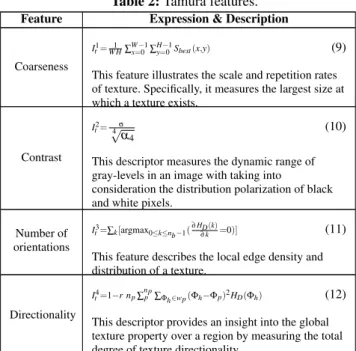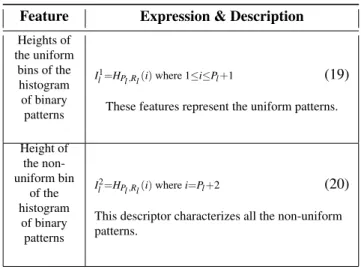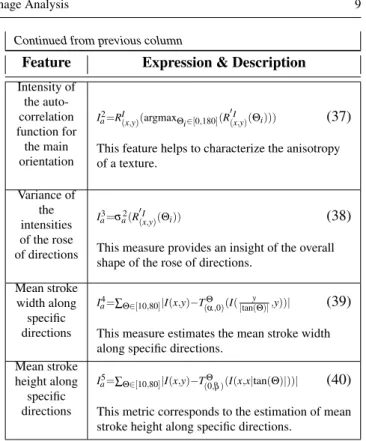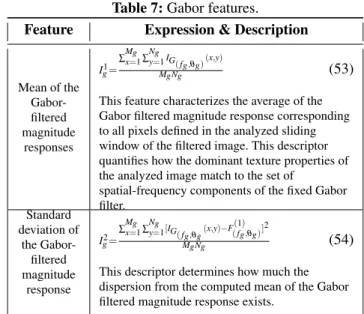Texture feature benchmarking and evaluation for historical document image analysis
Texte intégral
Figure
![Table 1: Texture-based methods used with HDIs in the lit- lit-erature. Feature Application Tamura – Zone classification [41]– Content segmentation [55] LBP – Text localization [9]– Pixel classification [15, 16]](https://thumb-eu.123doks.com/thumbv2/123doknet/14514225.530234/5.892.69.422.164.558/texture-feature-application-classification-content-segmentation-localization-classification.webp)



Documents relatifs
Discrimination over the Spectral Power Density The two first experiments were defined to assess the abil- ity of texture features to discriminate textures according to the
However, the proposed joint features estimation and segmentation procedures, despite showing satisfactory and state-of-the-art segmentation performance suffered from major
Unité de recherche INRIA Rennes : IRISA, Campus universitaire de Beaulieu - 35042 Rennes Cedex (France) Unité de recherche INRIA Rhône-Alpes : 655, avenue de l’Europe -
Palm and Lehmann (Palm & Lehmann, 2002) show that the Gabor transform is competitive at describing image textures and these texture feature extraction from the color
Then, for each analyzed book page its texture features are extracted which are then used in a clustering ap- proach by taking into consideration the estimation of the number of
This paper is a study of image retrieval based on color and texture features, the main algorithms include color histogram,color moment,gray level co-occurrence
This article presents a framework for the texture-based seg- mentation of historical digitized book content with little a priori knowledge in order to evaluate three approaches based
To highlight the connection between prediction errors and annotation divergence, we compute, for each possible combination of a train and a test set (considering all languages in the




